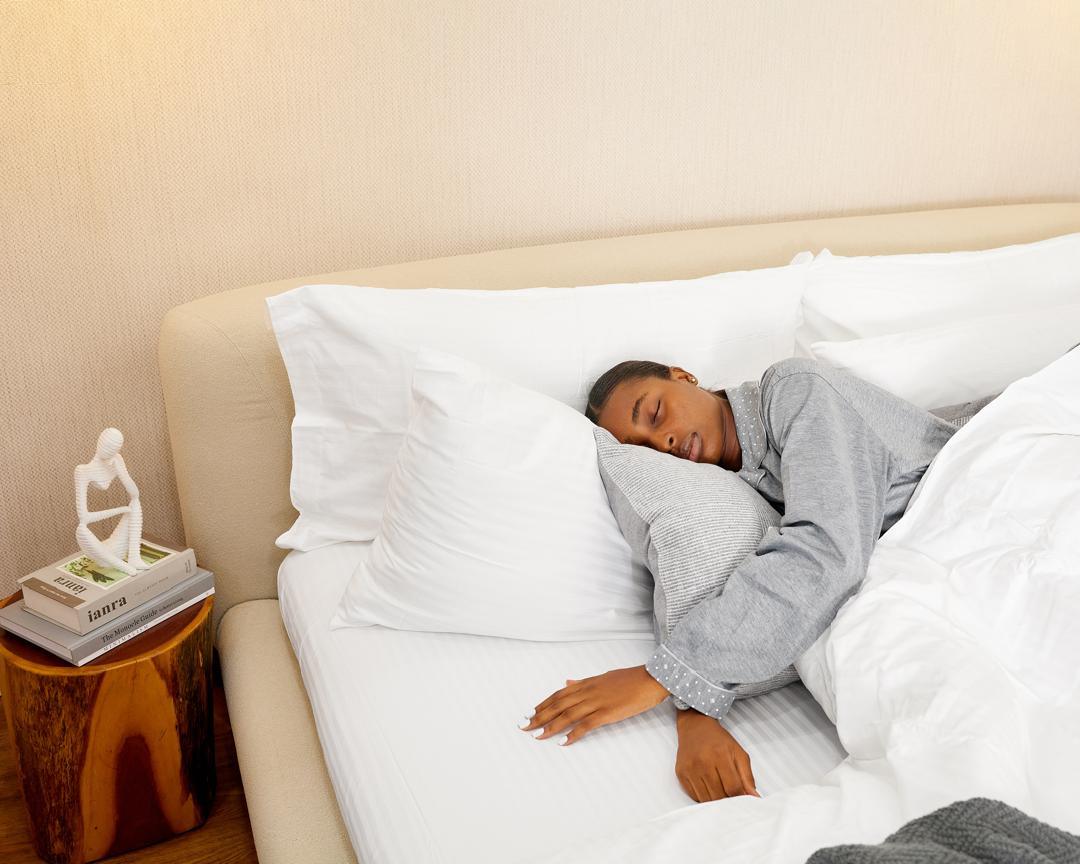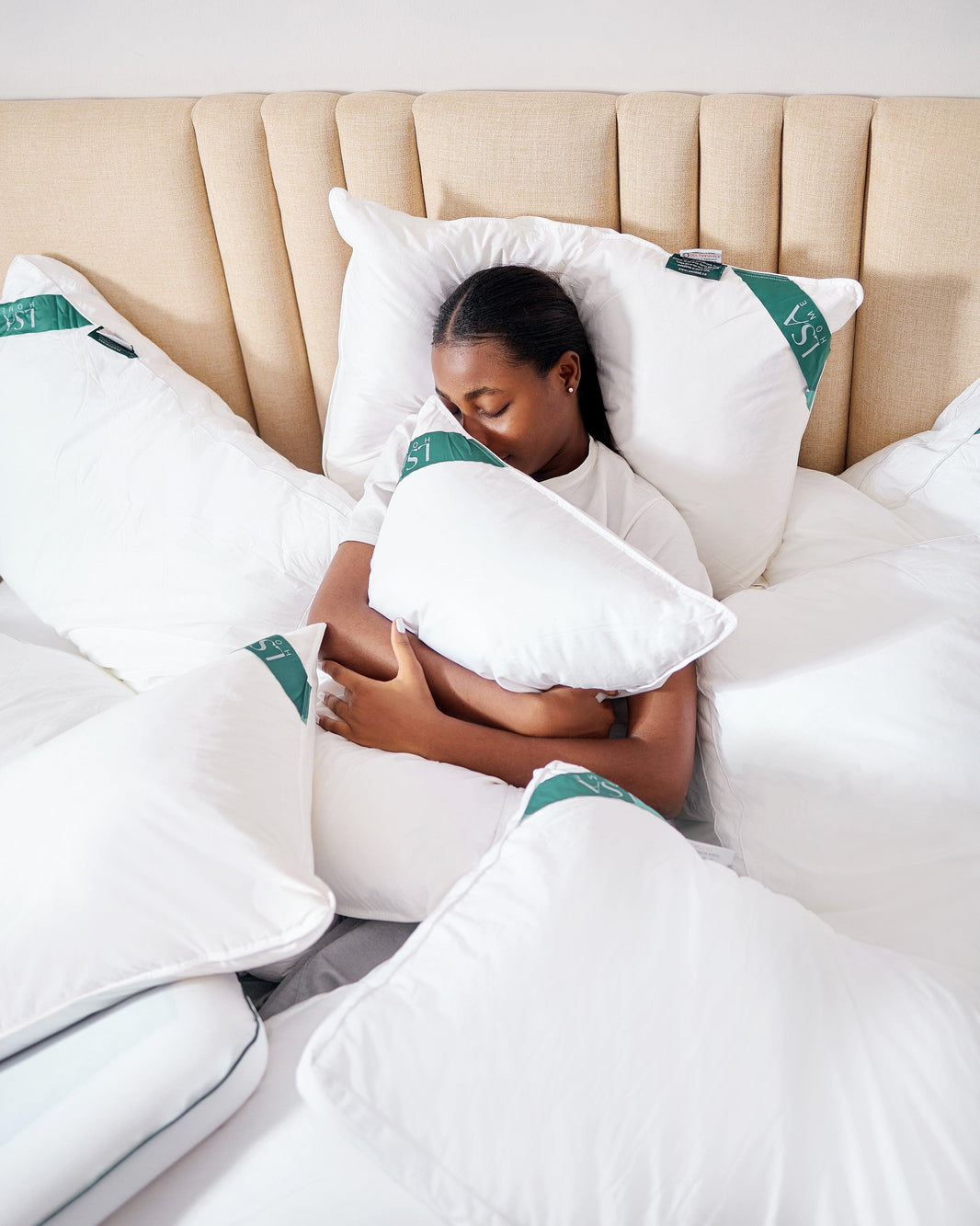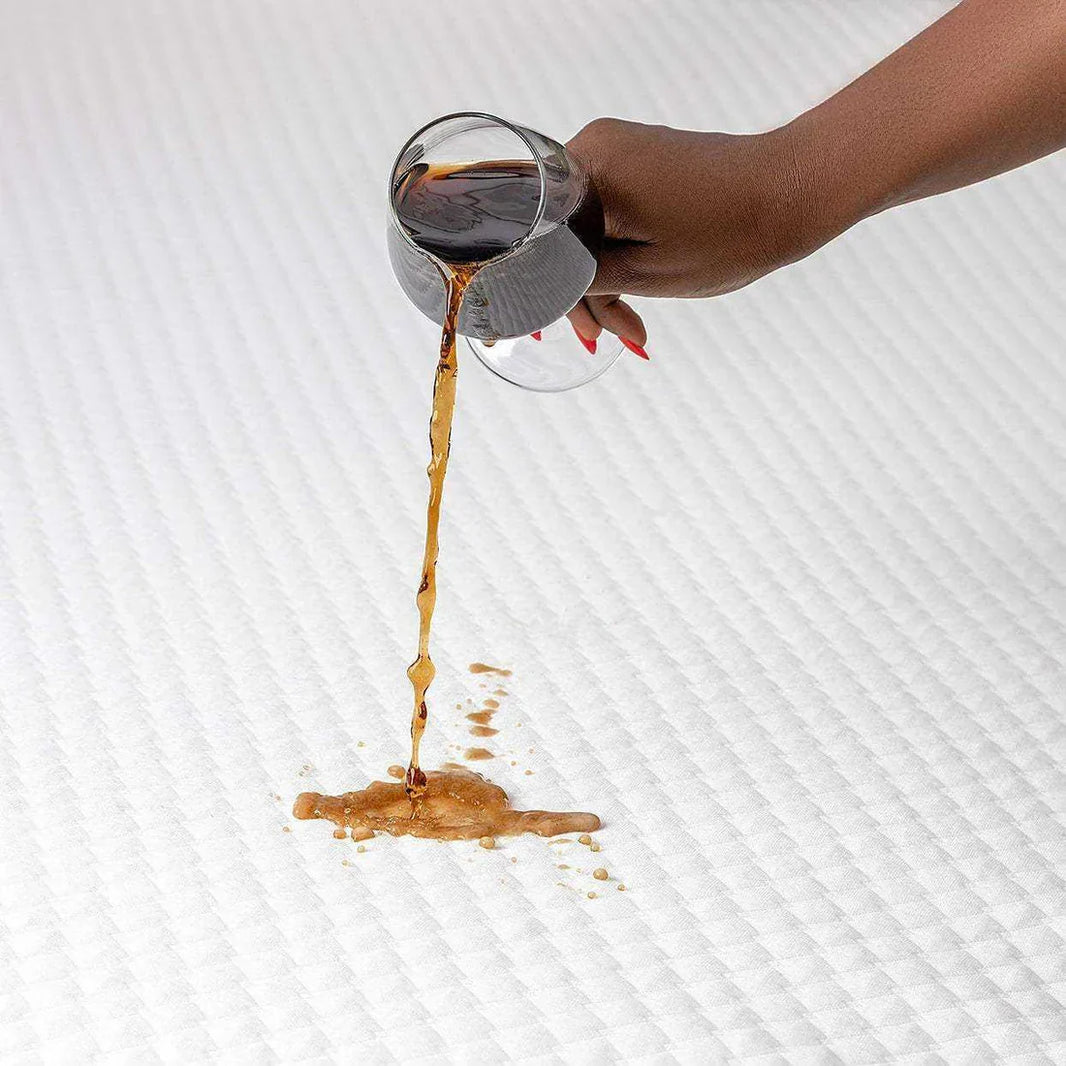We all love that moment when we fall into bed after a long day, right? Your body relaxes, your mind unwinds, and you nestle your face into your pillow. But have you ever wondered what’s happening during those hours of sleep beyond simply resting? Your pillow isn’t just cradling your head; it’s a key player in your skincare routine, and it might be time to give it the attention it deserves.
We spend a fortune on skincare products—cleansers, toners, serums, and moisturizers—all to wake up with that fresh, radiant look. But let’s face it: your pillowcase could be undoing all that hard work. The truth is, the fabric you rest your face on every night is like a silent partner in your skincare journey. So, what if I told you that changing your pillowcase could be the simplest (and most effective) addition to your routine?
What’s Lurking in Your Pillowcase?
Let’s get real for a second. Every night, as we sleep, our skin releases oils, sweat, and even tiny bits of dead skin cells. If you’re a side sleeper or a cuddler, your pillowcase is where all of that lands. Over time, these build up, turning your pillowcase into a playground for bacteria and allergens. Yikes!
Imagine this: you’ve just washed your face, layered on your favorite serums, and moisturized, expecting to wake up with glowing skin. But your face is resting on a surface that hasn’t seen the washing machine in days (or weeks—no judgment here). That buildup can clog pores, cause irritation, and leave you wondering why you’re waking up with unexpected breakouts or redness. No amount of skincare products can compete with a dirty pillowcase.
The Simple Solution: Fresh Pillowcases for Fresh Skin
Here’s the beauty of it—switching to a fresh pillowcase regularly can drastically reduce these issues. Think of it as hitting the reset button for your skin each night. A clean pillowcase provides a neutral, bacteria-free surface that supports your skin’s overnight renewal process. It’s the unsung hero of your skincare routine.
Now, you might be thinking, “Okay, but how often do I really need to change my pillowcase?” Dermatologists recommend switching it out every two to three days for those with acne-prone or sensitive skin. For others, once a week should be your baseline. I know, it sounds like a lot, but it’s an easy fix that can make a world of difference. And if you’re too busy to wash pillowcases that often, keeping a few extras in rotation makes it super simple to swap one out.
Choosing the Right Pillowcase: Cotton, Silk, or Satin?
Not all pillowcases are created equal. The fabric you choose can have a huge impact on your skin. Let’s break down the options:
Cotton Pillowcases: Cotton is truly a classic favorite when it comes to bedding! It’s breathable, durable, and super easy to wash, making it an excellent choice for a comfortable night's sleep. While cotton is naturally absorbent and can soak up your skin's natural oils and any products you've applied before bed, it’s important to note that this quality can also be beneficial for maintaining a fresh sleeping environment.
In comparison, some materials like polyester or certain synthetic blends may trap heat and moisture, leading to discomfort and irritation for your skin. Additionally, fabrics with rough textures can cause friction, which isn't ideal for sensitive skin. So, if you’re looking for a bedding option that combines comfort, ease of care, and a skin-friendly touch, cotton stands out as an exceptional choice for a restful night’s sleep!
Silk Pillowcases: Silk pillowcases are like the VIP treatment for your skin. They’re smooth, gentle, and help reduce friction, which is key for preventing wrinkles and fine lines. Silk also holds less moisture than cotton, so your expensive skincare products stay on your face, not your pillow. Sure, they can be a bit pricier, but if you’re serious about your skin, this upgrade is well worth it.
Satin Pillowcases: Satin offers similar benefits to silk but is usually more budget-friendly. It provides that same smooth, low-friction surface, making it ideal for both your skin and hair. If you want that silky-soft feel without the hefty price tag, satin is a great option. Plus, it’s often easier to maintain than pure silk.
Beyond the Pillowcase: Don’t Forget the Pillow Itself
Now, while we’re giving pillowcases the spotlight, let’s not forget the actual pillow beneath it. Your pillow can absorb oils and bacteria over time, so using a pillow protector is a game-changer. It’s like an extra layer of defense for your skin, and it’s easy to wash. Think of it as giving your pillow a shield, keeping it fresh for longer.
And if you’ve been holding onto your pillow for years, it might be time for a replacement. Pillows, just like other bedding, have a lifespan. The average pillow should be replaced every one to two years to maintain its support and cleanliness. If your pillow has lost its shape or feels lumpy, it’s no longer providing the proper support, which can affect your skin (and your sleep quality).
Don’t downplay The Role of Sheets neither.
While pillows and pillowcases often steal the spotlight in skincare discussions, your sheets play an equally important role. Think about it—every inch of your body comes into contact with your sheets for hours every night. The material, cleanliness, and quality of your sheets can significantly affect your skin’s health and appearance.
First, consider the fabric. Cotton sheets, especially those with a high thread count, are breathable and gentle on the skin. They help wick away moisture, reducing the chances of irritation and breakouts. On the other hand, sheets made from synthetic fibers can trap heat and sweat, creating an environment where bacteria thrive, which isn’t great for your skin.
But it’s not just about the fabric; it’s also about hygiene. Regularly changing and washing your sheets—ideally once a week—can prevent the buildup of dead skin cells, oils, and dirt that can clog pores and cause acne. For those with sensitive skin or allergies, hypoallergenic or organic sheets can be game-changers. These options are designed to minimize allergens and provide a softer, more comfortable surface, reducing the risk of irritation.
The bottom line? Just like pillowcases, the right sheets can make a noticeable difference in your skincare routine. By investing in quality and keeping them clean, you’re giving your skin a better chance to stay clear, smooth, and healthy.
How Pillowcases Tie into Skincare Products
Let’s connect the dots between pillowcases and your skincare products. You might be using high-end, carefully curated products, but if your pillowcase isn’t up to par, it’s almost like throwing money down the drain. Here’s why: when your face rests on a dirty or overly absorbent pillowcase, it can soak up those serums and moisturizers you’ve applied. Instead of those products working on your skin, they end up absorbed into the fabric.
By using a fresh, clean pillowcase, you’re ensuring that your skincare products stay where they belong—on your face, doing their magic. You’ll notice a difference in how your skin feels in the morning when you pair the right products with the right pillowcase.
Real-Life Pillowcase Hack: Making the Change Easier
I get it; life is busy, and laundry isn’t always at the top of the to-do list. But incorporating fresh pillowcases into your routine doesn’t have to be a hassle. One simple tip is to keep a stash of pillowcases within easy reach of your bed. That way, even on the busiest of nights, you can quickly swap out your pillowcase without much effort. It’s a small change that has a big payoff for your skin.
And if you’re a fan of self-care rituals, think of changing your pillowcase as part of that routine. Imagine slipping into bed with a fresh, cool pillowcase that feels luxurious against your skin. It’s an act of self-love that sets the stage for a restful night’s sleep and better skin.
Investing in Your Skin: Is It Worth It?
We all want to wake up with that fresh, radiant glow. And while skincare products play a big role, your pillowcase is an essential part of the equation. Investing in quality pillowcases—whether it’s silk, satin, or high-thread-count cotton—is an investment in your skin’s health. It’s about creating the best environment for your skin to recover, renew, and shine.
So, next time you think about your skincare routine, don’t stop at the last step of your night cream. Extend your routine to include the fabric your face rests on for hours. A clean, quality pillowcase could be the simplest—and most effective—addition to your skincare arsenal.
Your Skin Deserves the Best!
There’s something undeniably satisfying about slipping into bed with a fresh pillowcase. It’s like treating yourself to a mini spa experience every night. And the best part? It doesn’t have to be complicated. Whether you choose silk for a luxurious touch or satin for a budget-friendly option, the goal is the same: to give your skin the best chance to glow.
In the end, no skincare routine—no matter how expensive or elaborate—can replace the benefits of a clean, inviting pillowcase. It’s the small things that often make the biggest impact, and a fresh pillowcase is one of those things. So, if you’re ready to level up your skincare game, start with where your skin spends the most time—your pillow.








